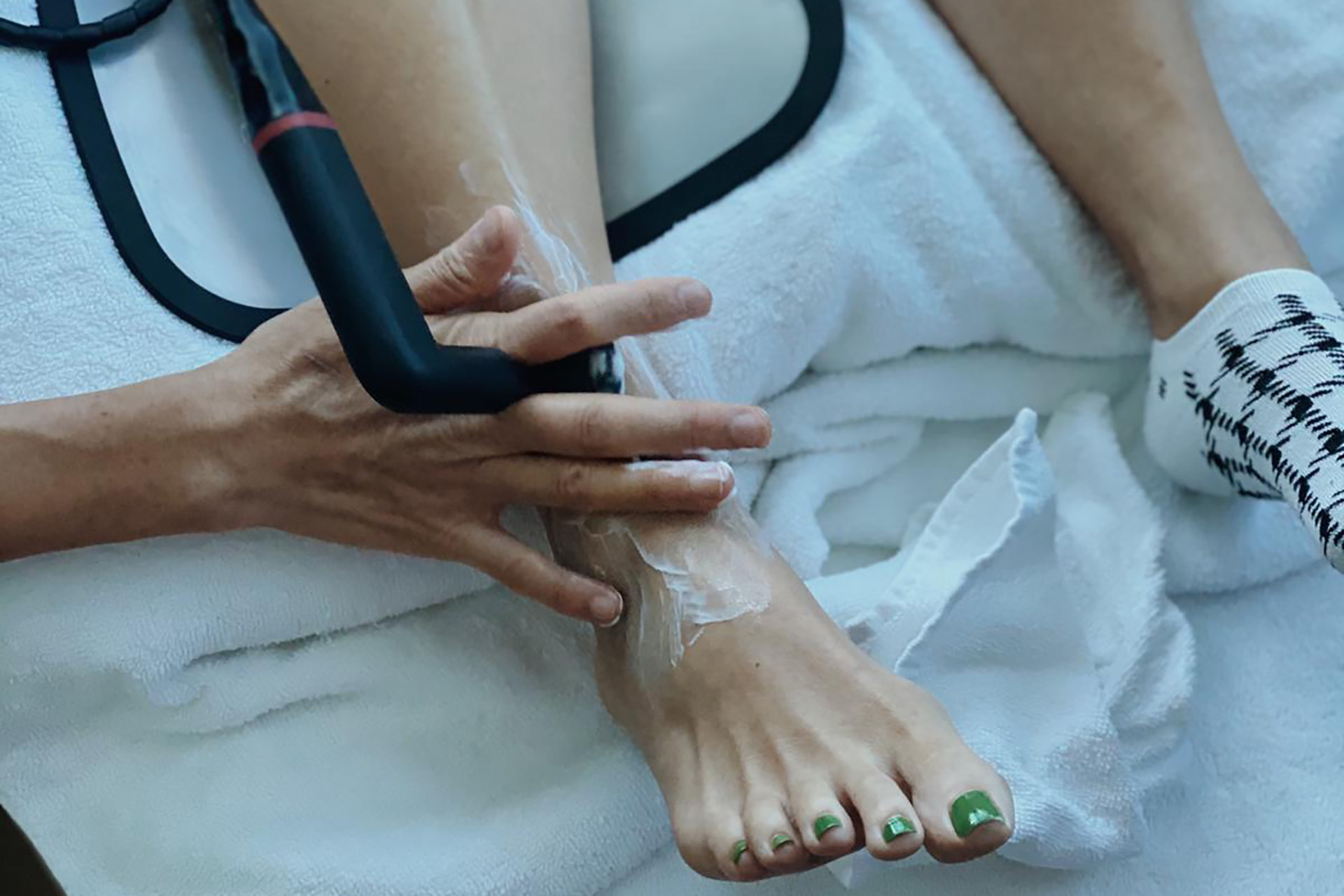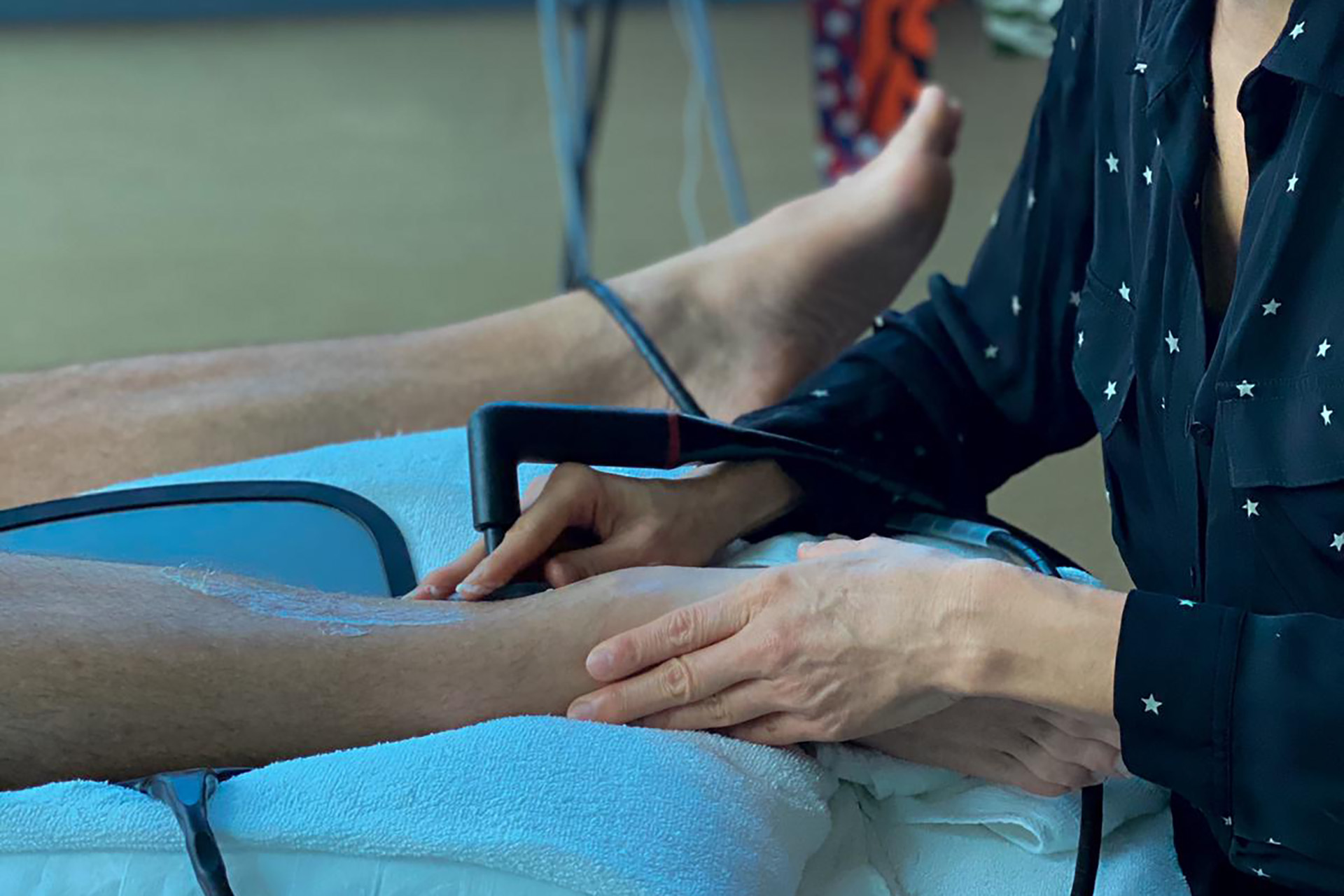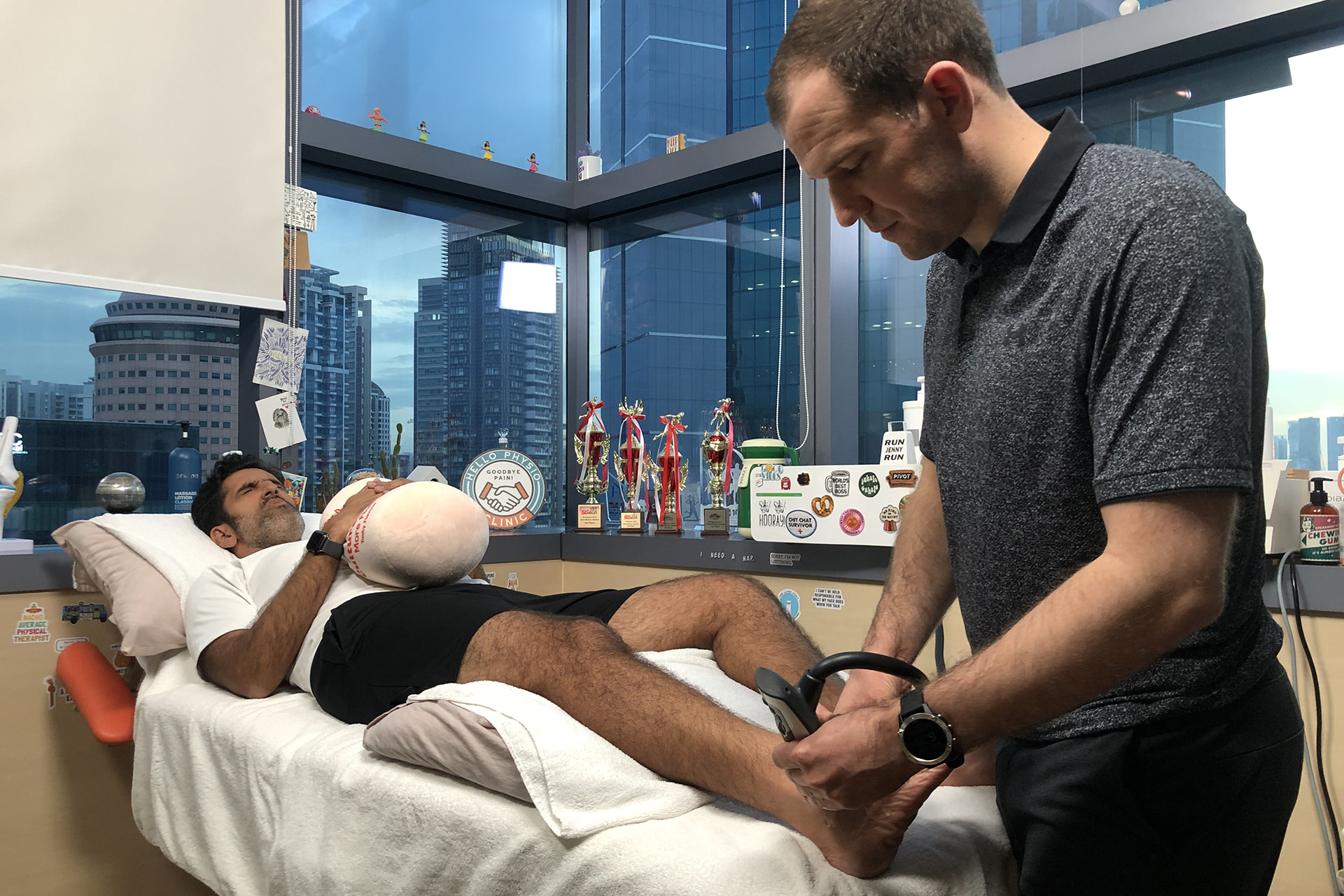|
Getting your Trinity Audio player ready...
|
At HelloPhysio, we see a lot of patients with high ankle sprains. A particularly memorable case was of a young athlete who suffered a high ankle sprain during a football match. He was sprinting down the field, chasing after the ball, when suddenly, his foot twisted in an awkward direction. He felt a sharp pain in his ankle, and before he knew it, he was on the ground, clutching his leg in agony. The diagnosis was a high ankle sprain, and the road to recovery was long and arduous.
This case highlighted the importance of taking high ankle sprains seriously and the need for prompt and proper treatment.
When it comes to ankle sprains, most people think of the typical lateral ankle sprain, where the ligaments on the outside of the ankle are stretched or torn. However, often overlooked, is another type of ankle sprain which can be just as debilitating: the high ankle sprain.
A high ankle sprain, a syndesmosis injury, occurs when the ligaments connecting the tibia and fibula bones in the lower leg are stretched or torn. This type of injury is particularly common in sports that involve twisting and turning, such as soccer, football, rugby, and basketball.
Adjunctive Therapies to Treat High Ankle Sprains
At HelloPhysio, we believe in harnessing the full potential of adjunctive therapies to accelerate recovery and optimize outcomes for our patients. We turn to cutting-edge technologies like INDIBA® Activ and Focal Shockwave Therapy to stimulate tissue regeneration, reduce pain and inflammation, and promote soft tissue healing for high ankle sprains. Incorporating these therapies into our comprehensive treatment plans empowers our patients to recover faster, stronger, and more efficiently from their high ankle sprain symptoms.

Our return to sport loading programs are designed to get athletes back in the game quickly and safely after an injury like a high ankle sprain. We take a structured and progressive approach, tailoring our exercises and activities to each athlete’s individual needs and goals.
From strengthening the ankle, foot, and lower leg to simulating the demands of their chosen sport, we push our patients to reach new heights of performance and function. By gradually increasing the intensity and complexity of our exercises, we ensure a seamless transition back to competition, minimizing the risk of re-injury and maximizing success as part of high ankle sprain recovery.
The Difference Between High and Low Ankle Sprains
So, what sets high ankle sprains apart from their more common counterparts? The main difference lies in the location and severity of the injury. Low ankle sprains typically occur when the foot rolls inward or outward, causing the ligaments outside the ankle to stretch, or tear. On the other hand, high ankle sprains occur when the foot is twisted or rotated, causing the ligaments between the tibia and fibula to be stretched or torn.
High ankle sprains are often more severe and can take longer to heal than low ankle sprains. The syndesmosis ligaments are crucial in stabilizing the ankle and supporting the lower leg. When these ligaments are injured, it can affect the entire lower leg, leading to pain, stiffness, and instability.

Symptoms of High Ankle Sprains
The symptoms of high ankle sprains can vary depending on the severity of the injury. Common symptoms include:
- Pain and tenderness in the ankle and lower leg
- Swelling and bruising around the ankle
- Instability or wobbliness in the ankle
- Difficulty walking or bearing weight on the affected leg
- Pain that worsens with activity and improves with rest
Diagnosing a high ankle sprain typically involves a combination of physical examination, imaging tests such as X-rays or MRIs, and a thorough medical history. Treatment for high ankle sprains usually involves a combination of PEACE and LOVE protocol to reduce pain and inflammation.
High ankle sprains are a common yet often overlooked injury that can significantly impact your daily life and athletic performance. By understanding the causes, symptoms, and treatment options for high ankle sprains, you can take steps to prevent and manage this injury. Remember, don’t hesitate to seek medical attention if you experience any ankle pain or instability. You can overcome a high ankle sprain with proper treatment and care and get back to your active lifestyle.
In the case of our young patient with a high ankle sprain, prompt treatment and a comprehensive rehabilitation program with adjunctive therapies were crucial in his recovery. It took time and effort, but he eventually returned to the football field stronger and more aware of the importance of ankle care.
Don’t let a high ankle sprain hold you back any longer — contact HelloPhysio today to schedule your appointment and take the first step towards sprained ankle treatment!

